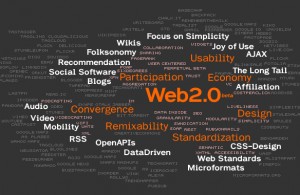I’ve spent the last several days at the National Communication Association convention in San Diego, exploring several themes in rhetoric and public affairs. It’s been a fitting moment to reflect upon this year’s election dynamics, and several panels on political communication have been wrestling with some of the data emerging on issues ranging from Obama’s oratory to the extraordinary use of the Web over the course of both campaigns. Rather than exploring any of these in depth, I’ve compiled a broad list of some heuristic points—what some political communication scholars consider the most noteworthy aspects of the campaign and key issues to continue exploring:
Most scholars seemed to agree that Obama’s speech on race in America was one of the most important speeches in the contemporary era. In a larger sense, several scholars noted that “Obama is a candidate made by oratory,” and this will remain a phenomenon in much need of further elucidation. Some noted that Obama’s campaign should finally put to rest for good any claim that oratory or rhetoric no longer matter. A couple of scholars argue that Obama has borrowed President Reagan’s rhetoric of the American Dream, but reconstituted it as a communitarian rather than an individual vision of political engagement (see the Quarterly Journal of Speech, Rowland & Jones, 2007).
McCain’s use of the term “maverick” was diffused during the election, as the key issues he was a “maverick” on (torture, immigration, and global warming) were all issues that didn’t play to the Republican base. As such, McCain’s campaign was in a difficult box. We also need to recognize that in presidential campaigns we have a history of admiring heroes and then not voting for them. “Hope” was not a theme of the campaign, it was the result of it (Rowland).
In this election, Saturday Night Live did a great job of showing that woman candidate A does not equal woman candidate B. At the same time, we need to look more into the way in which Palin’s maternal image affected many women. She became for many women what George W. Bush has proven to be for many men—the kind of person you could “go out and have a beer with.” In particular, this should lead us to seek out differences between how many women voters responded to Hillary Clinton versus Sarah Palin (Carlin).
We need to look at the overwhelming number of political ads used in this campaign. In the 2004 presidential campaign, both candidates created and endorsed (i.e. a count of “official” candidate ads) approximately 250 video ads. In this election, the sum was 850 (Louden)!
During every debate, Obama’s greatest asset was that he came off as steady, cool, and unflappable. McCain was very different in every debate. In Marshall McLuhan’s terms of hot and cool media, Obama was a cool candidate with a hot response (Anderson).
This election was a fusion of tradition and new politics, it was undoubtedly a realigning election of “Chicago precinct politics meets Web 2.0.” Obama came across as a pragmatist, following a line of political engagement stemming from John Dewey. We also need to know more about Obama’s remarkable consistency and message discipline during the campaign (Smith).
Obama’s use of the Internet to drive participation was extraordinary, in terms of both contacting voters and contacting them often. That the Obama campaign now has a database of 11-12 million e-mails to contact will remain a key resource in governing. A highlight in the campaign was when 630,000 new Obama voters gave to the Obama campaign in September, apparently in response to the Palin bump. The average donor gave $86 in the Obama campaign, half of which came in from the Internet (Hollihan).
The number of videos about Obama on YouTube totaled 112 million, the number of McCain videos totaled 25 million. Obama’s friend list on Facebook hit 3 million, compared to McCain’s 625,000. In October/November alone the Obama channel beat the number of hits on the Beyonce and Britney Spears channels on YouTube. Polls demonstrate that people were engaged in this election through the participatory media experiences that were offered by the campaigns. The study of media effects is on its way out, people are driving their own effect change now (Bennett).


